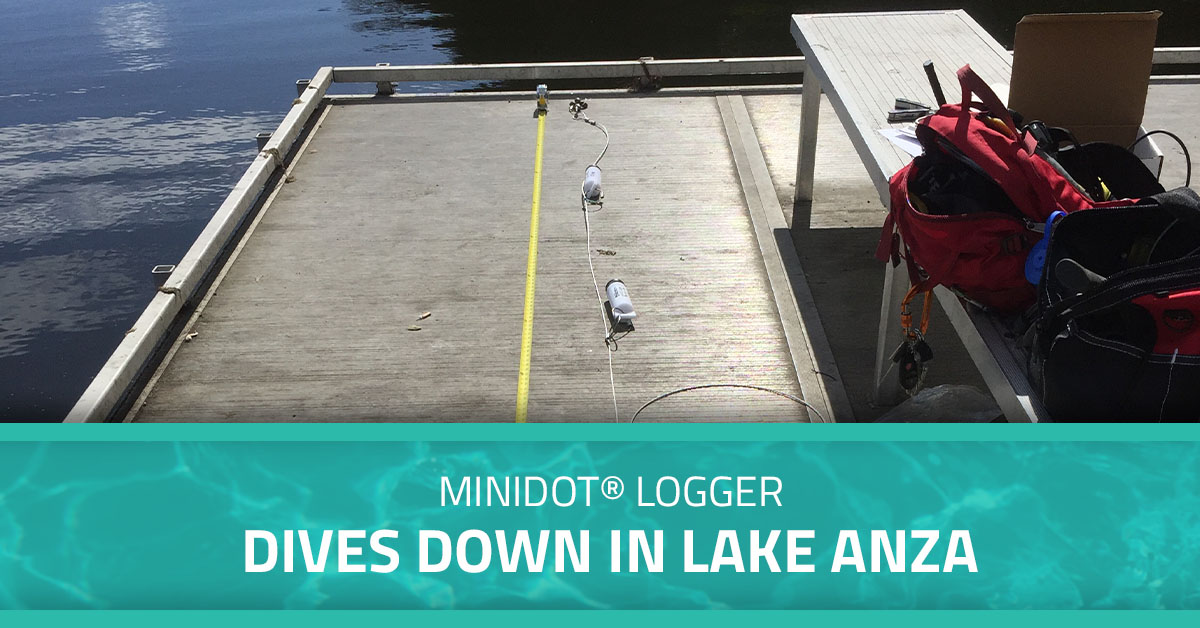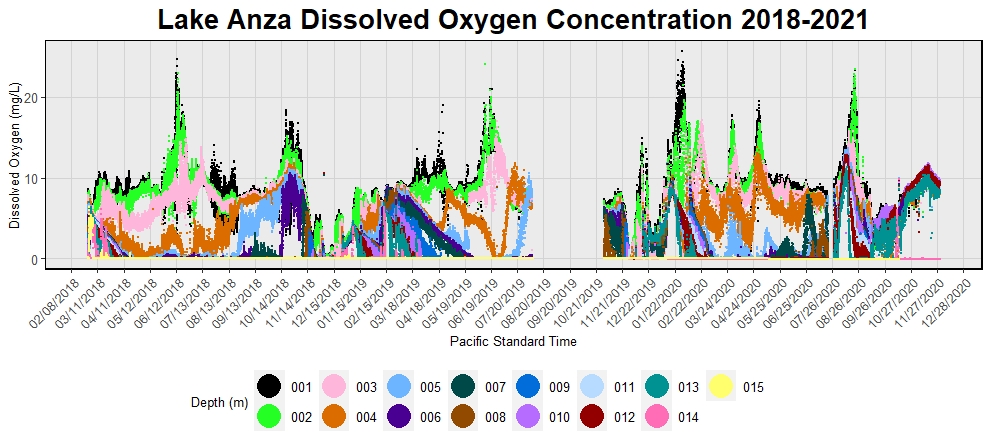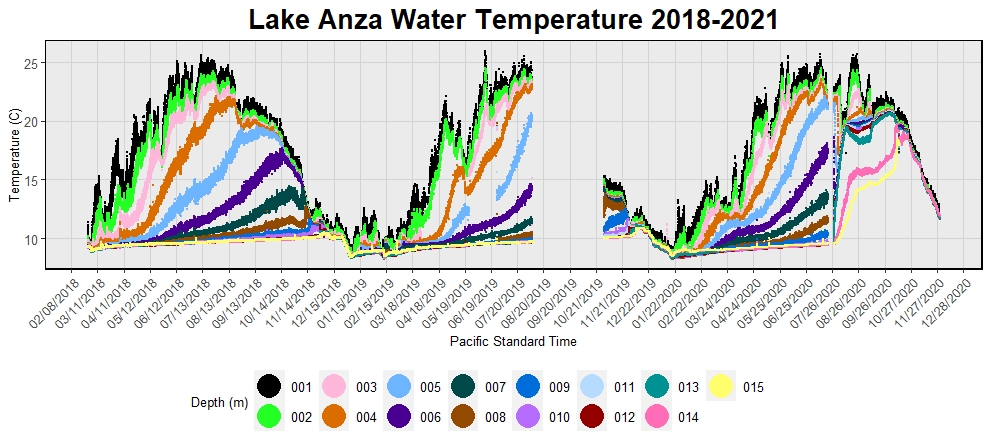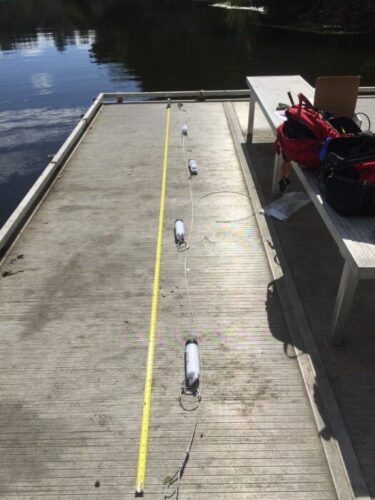
miniDOTs® Monitor CA Red-Legged Frog Reintroduction
October 19, 2023
PME’s Cyclops-7 Sees Oversea Sewer Systems
April 24, 2024miniDOT® Logger Dives Down in Lake Anza
Project Details
- PRODUCT(S): miniDOT
- APPLICATION: Freshwater
- PARAMETER: Dissolved Oxygen, Temperature
- LOCATION: Tilden Regional Park, Northern California
- ORGANIZATION: East Bay Regional Parks District
- RECOGNITION: Ed Culver

Case Study Description
The City of San Francisco is synonymous with iconic landmarks like the Golden Gate Bridge and Alcatraz Island, as well as the surrounding bay. While the bay’s cold waters and brisk currents hardly invite casual swimmers, less than 15 miles due east lies another scenic spot with far friendlier waters. Lake Anza is nestled amid the Berkely Hills in Tilden Regional Park, one of over 70 parks within the East Bay Regional Park District. Constructed in the 1930s, today the reservoir is known for its pleasant beach which attracts scores of swimmers and visitors every year. Unfortunately, recent decades have seen increased rates of harmful cyanobacterial algal blooms which threaten the safety of Lake Anza’s visitors and the health of its ecosystem.
Within most healthy bodies of water, the presence of vegetation is expected and indeed beneficial. However, the presence of algal blooms is often indicative of an ecological imbalance like an excess of nutrients. Blue-green algae, or cyanobacteria, is a particularly harmful type of algal bloom as it can produce toxins like microcystin. Microcystin and other cyanobacteria toxins can sicken humans and mammals, even proving fatal in sufficient quantities. If left unchecked, algal blooms may create “dead zones” by depleting aquatic oxygen levels and preventing photosynthesis until the water cannot support aquatic flora or fauna like the native Rainbow Trout population.


Seasonal Turnover and Subsequent Spikes
Covering an area of just 10 acres, Lake Anza’s modest size conceals surprising depths. The hypolimnion of the lake, or its lowest level, lay 15 meters below the surface along with layers of sediment and long-dead vegetation. The uppermost 3 meters of Lake Anza receive sufficient oxygenation to support normal ecological function, yet the lower 12 meters of the reservoir are anoxic. Although decomposition slows in anoxic environments, it does not halt entirely; sunken organic material release phosphorus and nitrogen as it breaks down in the hypolimnion. Here, it will remain largely trapped until seasonal temperature changes trigger lake turnover. When water from the lake’s lower levels trades places with water at its higher levels, those nutrients trapped in the hypolimnion are suddenly brought back to oxygenated levels. Thus, the conditions become favorable to support a cyanobacterial algal bloom. Even if a bloom does not occur, Lake Anza can go from vital refuge to veritably poisonous for fish within its waters due to sudden, extreme spikes in phosphorous.
Intervention and Oxygenation
 Without intervention, Lake Anza may have continued or increased the severity of such harsh turnovers; but Fisheries Biologist Ed Culver and his colleagues with the East Bay Regional Park devised a mitigation strategy to combat the subsequent nutrient spikes. Before installing an oxygenation system, Culver deployed 15 miniDOT® loggers at staggered depths across the lake. With one miniDOT® logging temperature and dissolved oxygen (DO) for every meter, Culver and his team were able to observe how oxygenation in the hypolimnion would impact the water above. Data was recorded weekly in the field by Culver between 2017 and 2019, with compiled results reflecting a comprehensive snapshot of temperature and DO throughout Lake Anza.
Without intervention, Lake Anza may have continued or increased the severity of such harsh turnovers; but Fisheries Biologist Ed Culver and his colleagues with the East Bay Regional Park devised a mitigation strategy to combat the subsequent nutrient spikes. Before installing an oxygenation system, Culver deployed 15 miniDOT® loggers at staggered depths across the lake. With one miniDOT® logging temperature and dissolved oxygen (DO) for every meter, Culver and his team were able to observe how oxygenation in the hypolimnion would impact the water above. Data was recorded weekly in the field by Culver between 2017 and 2019, with compiled results reflecting a comprehensive snapshot of temperature and DO throughout Lake Anza.
Since the installation of the hypolimnetic oxygenation system, Culver’s team has determined that 5mg/L of O2 is the ideal level of augmentation to encourage decomposition in the deepest levels of the lake while remaining hospitable to resident fish. Such oxygenation systems are more commonly found in larger bodies, particularly those used for drinking water, but the success seen by East Bay Regional Park may only be the first of many to come. While Culver imagines the detritus built up at the bottom of Lake Anza, the early success shown by the miniDOT® data is on track to continue its positive trend.
Product Description
The miniDOT® Logger is a completely submersible instrument that logs dissolved oxygen and temperature measurements. Data is recorded on the internal SD card and operational functions, like setting time and sample intervals, can be accomplished via USB cable. The oxygen sensor is an optode that measures dissolved oxygen concentration in water through a fluorescence method. The miniDOT® can withstand temperatures ranging from 0 – 35°C with a depth rating of 300 meters.

